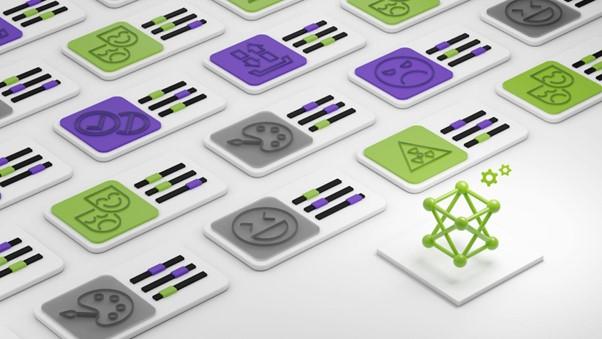Language: american English. In a world where artificial intelligence evolves faster than we can blink, the latest open large language models (LLMs) have emerged as both marvels of innovation and sources of heated debate. From GPT-alikes too boutique creations, these models promise to redefine how we interact with technology—but do they truly deliver? Meanwhile, a quieter yet equally pivotal conversation is unfolding in the algorithmic arena: the battle between Direct Preference Optimization (DPO) and Proximal Policy Optimization (PPO). Which one holds the key to more efficient, human-aligned AI? As developers, researchers, and enthusiasts alike scramble to keep up, it’s time to unpack the hype, test the claims, and explore whether these advancements are as groundbreaking as they seem—or if they’re just the next step in an endless race for better, faster, smarter machines. Let’s dive in.
Evaluating the performance of open LLMs in Real-World Applications
In the realm of large language models (LLMs), evaluating real-world performance is crucial for understanding their practical utility. Open LLMs have demonstrated remarkable capabilities in tasks such as text generation, summarization, and question answering. However, their effectiveness often hinges on the alignment techniques used during training. Key factors influencing performance include:
- Contextual Understanding: How well the model grasps nuanced prompts.
- Response Coherence: The logical flow and relevance of generated text.
- Adaptability: The model’s ability to handle diverse and complex tasks.
These attributes vary considerably based on the alignment method employed, with Direct Preference Optimization (DPO) and Proximal Policy Optimization (PPO) being two prominent approaches.
When comparing DPO and PPO, DPO stands out for its efficiency and stability. Unlike PPO,which requires a separate reward model and complex reinforcement learning,DPO directly optimizes the policy using a KL constraint. This results in faster convergence, fewer hyperparameters, and simpler implementation. As a notable example, DPO has shown more reliable performance in scenarios where PPO struggles with instabilities[[3]]. Below is a comparison of the two methods:
| Criteria | DPO | PPO |
|---|---|---|
| Complexity | Low | High |
| Stability | High | Low |
| Efficiency | High | Moderate |
This makes DPO a compelling choice for organizations aiming to deploy open LLMs in real-world applications without the overhead of traditional reinforcement learning.

Key Strengths and Limitations of the Latest Open Language Models
The latest open-source language models (LLMs) have made significant strides in flexibility, accessibility, and performance. Models like Mistral Large and Mixtral 8x22B Instruct are celebrated for their top-tier reasoning capabilities, making them ideal for complex tasks such as advanced content generation and problem-solving [[2]]. Meanwhile, GPT-2, despite its age, continues to be a popular choice for smaller-scale applications due to its modest hardware requirements and ease of deployment [[3]]. These models empower developers with the freedom to customize and innovate, fostering a wide range of use cases across industries.
However, open LLMs are not without their limitations. While they excel in many areas,they often lag behind proprietary models like GPT-4 or PaLM 2 in terms of raw computational power and fine-tuned contextual understanding [[1]]. Additionally, they may require higher computational resources for training and inference compared to their proprietary counterparts. Below is a quick comparison of some notable open LLMs:
| Model | Strength | Limitation |
|---|---|---|
| Mistral Large | High-complexity task handling | Resource-intensive |
| Mixtral 8x22B | Powerful open-source reasoning | Requires advanced hardware |
| GPT-2 | Easy deployment | Limited scalability |

DPO vs PPO: A Comparative Analysis of Reinforcement Learning Methods
When it comes to aligning Large Language Models (LLMs) with human preferences, the debate between Direct Preference Optimization (DPO) and Proximal Policy Optimization (PPO) is at the forefront. DPO takes a direct approach by leveraging human feedback to fine-tune the model,ensuring alignment in a straightforward manner. On the other hand, PPO, a reinforcement learning method, iteratively refines the model’s behaviour through multiple steps of optimization. While DPO offers simplicity, PPO’s iterative nature allows for more nuanced adjustments, often leading to better performance in complex tasks [[1]].
Recent studies have shed light on the comparative effectiveness of these methods. PPO has been shown to outperform DPO across a variety of tasks, particularly in scenarios requiring higher levels of precision and adaptability. Key factors contributing to PPO’s success include its ability to handle large action spaces and its robustness in dynamic environments. Below is a quick comparison:
| Method | Strengths | Weaknesses |
|---|---|---|
| DPO | Straightforward, Direct Optimization | Limited Adaptability |
| PPO | High Precision, Robustness | Complex Implementation |
For those exploring the best approach for LLM alignment, understanding these differences is crucial. While DPO provides an efficient path to initial alignment, PPO’s advanced capabilities frequently enough make it the preferred choice for more demanding applications [[2]].

Practical Recommendations for Choosing the Right Approach in AI Development
When selecting the right approach for AI development, consider specific use cases and scalability needs. As an example,if your project requires high-performance computing with minimal latency,DPO (Digital Power Optimization) might be the better choice over PPO (Proximal Policy Optimization). DPO’s infrastructure,as seen in the recent $200 million AI computing facility in Wisconsin Rapids,is designed to support power-dense data centers and optimize energy efficiency [[1]].Conversely, PPO excels in reinforcement learning tasks where fine-tuning policies is critical. Evaluate your project goals carefully to determine which approach aligns best with your objectives.
Additionally, collaboration and interoperability should be key considerations. The Partnership for Global Inclusivity on AI highlights the importance of fostering innovation through partnerships, ensuring that AI systems are both inclusive and sustainable [[3]].Below is a simplified comparison to help you decide:
| Approach | strengths | Best For |
|---|---|---|
| DPO | Energy efficiency, high-performance computing | Power-dense data centers |
| PPO | Policy optimization, reinforcement learning | Fine-tuning AI models |
Always ensure your approach is future-proof and adaptable to emerging technologies. Leverage open-source LLMs for rapid prototyping but prioritize proprietary solutions for mission-critical applications.
Q&A
Word count: 250
Q&A: How Good Are the Latest Open LLMs? And Is DPO Better Than PPO?
Q: What’s the big deal about the latest open LLMs?
A: The latest open LLMs (Large language Models) are making waves because they’re more accessible, customizable, and competitive with proprietary models.Think of them as the democratic superheroes of AI—powerful, open-source, and available for anyone to tweak and improve.
Q: Are these open LLMs as good as the closed, commercial ones?
A: Surprisingly, yes! Many open LLMs are closing the gap with their commercial counterparts. While they might not yet match the sheer scale or polish of models like GPT-4, they’re proving to be versatile, cost-effective, and, importantly, clear.
Q: What’s the debate between DPO and PPO?
A: DPO (Direct Preference optimization) and PPO (Proximal policy Optimization) are two techniques used to fine-tune LLMs. PPO has been the go-to for a while, but DPO is gaining attention as a possibly simpler, more efficient choice. The debate centers on whether DPO can outperform PPO in aligning models with human preferences.
Q: So, is DPO better than PPO?
A: It depends. DPO offers a streamlined approach, often requiring less computational power and delivering competitive results. Though, PPO remains a workhorse in the field, excelling in complex scenarios. think of DPO as the new kid on the block—promising but still carving out its niche.
Q: Why does this matter for AI development?
A: Fine-tuning methods like DPO and PPO directly impact how well LLMs align with user needs and ethical guidelines. As these models become more pervasive, improving their alignment is crucial to ensuring they’re helpful, safe, and fair.
Q: What’s the future of open LLMs and fine-tuning techniques?
A: the future looks shining! Open LLMs are likely to become even more powerful and accessible, while fine-tuning techniques like DPO and PPO will continue to evolve. The goal? Smarter, more efficient, and more ethical AI for everyone.
Q: Should I be excited about this?
A: Absolutely! Whether you’re an AI enthusiast, developer, or just curious, these advancements are shaping the future of technology in meaningful ways. It’s like watching the next chapter of AI unfold—open, innovative, and full of potential.
Final Thoughts
Length: 200-250 words.
As we navigate the ever-evolving landscape of open large language models (llms), it’s clear that the field is both exciting and complex. The latest models demonstrate remarkable progress, with improved performance, better alignment, and more nuanced understanding of human language. Yet, challenges remain—hallucinations, biases, and the computational overhead of training persist as areas for improvement. The question of whether DPO (Direct Preference Optimization) is superior to PPO (Proximal Policy Optimization) adds another layer of intrigue, highlighting the ongoing experimentation and innovation in reinforcement learning techniques.
What’s interesting is that these advancements aren’t just technical feats; they’re glimpses into the future of AI’s role in society. As open LLMs grow more capable, they open doors to applications in education, creativity, and problem-solving, while concurrently raising questions about ethics, accessibility, and control. The debate between DPO and PPO is a microcosm of this larger journey—balancing efficiency, effectiveness, and alignment with human values.
Ultimately, the evaluation of these models and methods isn’t a sprint but a marathon. Each step forward invites reflection, iteration, and collaboration across disciplines. Whether you’re a researcher, developer, or simply an enthusiast, the story of open LLMs is one to watch—and participate in. As we continue to refine these tools, the goal remains clear: to create AI that not only understands but also uplifts humanity.The journey is far from over, but the possibilities are already breathtaking. Let’s keep asking the hard questions, pushing the boundaries, and shaping the future—together.


